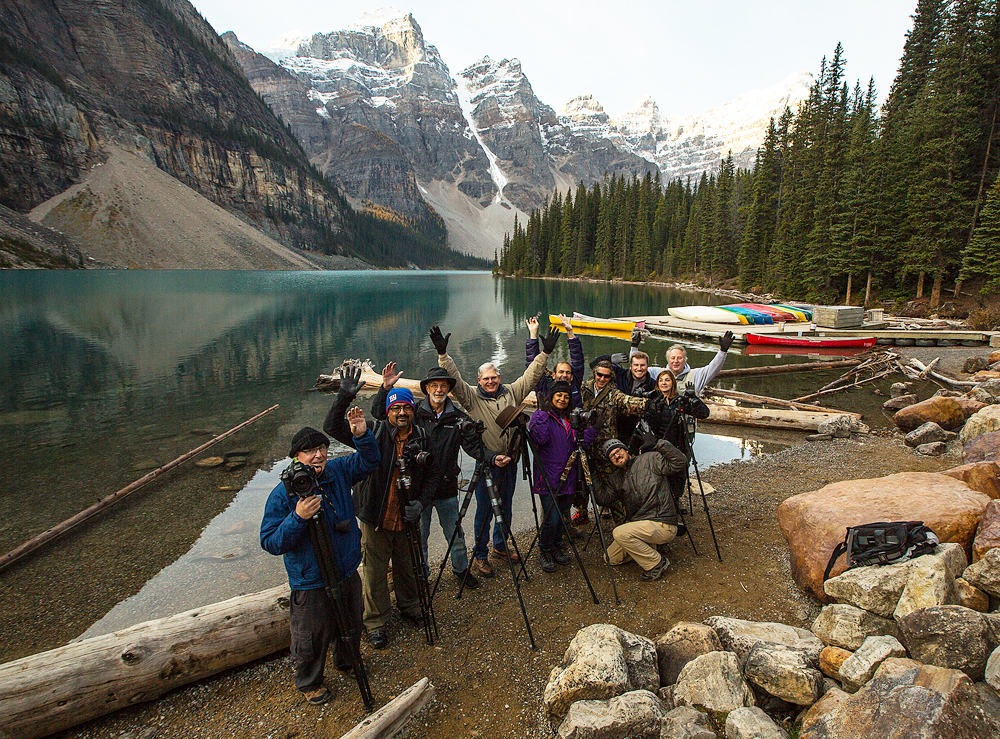
|
|
|||||
The Rocky Mountains are a jagged line of stone teeth cutting through the middle portion of North America. The whole range is filled with intense beauty, but none more so than the Canadian Rockies. These stone monoliths, glaciers, and icy blue lakes draw in hundreds of thousands of viewers each year to soak in one of Mother Nature's grandest shows. While simply standing and viewing the Rockies is enough for some, many want to be able to come away with photographs that show their friends and family what they witnessed, and help them share a portion of what they felt during their time in the Rockies.
Day 1
A group of 9 hearty photographers came from all corners of the planet to let myself and Stephen Oachs guide them around Banff National Park, one of the jewels of the Canadian Rockies. We met our group on Saturday afternoon in Calgary, just a short 90-minute drive away from the mountains and wilderness we planned to visit. For some it was a second time visiting the area, and others had only seen the Rockies in pictures. The orientation is a great chance for us to learn more about the students, and their experience levels, as well as give the group a first chance to meet and begin to develop a rapport. As is typical for most of our workshops we have a large rage of experience levels that range from weekend hobbyists, to those with 40-years of photography experience. The one thing that they all have in common is a love for the medium, and a desire to find the best light possible, and after a good night’s rest, that's what we planned to do!
Day 2
We departed the next morning headed north to Banff proper, and our home for the first 3 days of this adventure. After a scenic drive through the fall color and pastoral regions outside of Calgary, we began to climb and everyone was able to catch their first glimpses of the mighty Rockies. A storm was still working its way out of the area, so all were hopeful that the rain and drizzle would be dumping some new snow on the higher peaks, and give our photography some added punch when we set out for first grand shoot at Two Jack Lake in the morning. Upon arriving in Banff our hotel was ready, so everyone unloaded their gear and set off for a couple hours to unpack, and have lunch. Over lunch the group continued to get to know each other and share photographic successes they'd had, and things they wanted to learn during the trip. The weather was still working its way out of the area, so the afternoon would be spent searching for wildlife and giving the group a lay of the park, and seeing where the best pockets of fall foliage were located.
 Our drive didn't reward us with much in the way of wild creatures, but we did see that the fall color in the area was absolutely stunning, and at or near peak. Everyone was excited for the following morning and our first crack at photographing the massive Mount Rundle, with its easily recognizable jagged shape.
Our drive didn't reward us with much in the way of wild creatures, but we did see that the fall color in the area was absolutely stunning, and at or near peak. Everyone was excited for the following morning and our first crack at photographing the massive Mount Rundle, with its easily recognizable jagged shape.
Day 3
Morning comes early and at 5:30am our group was gathered and ready for our first shoot. The rain had subsided, and patches of stars were visible in the frigid morning sky. Only the faintest hint of breeze was detectable, so all were hopeful that when we arrived on the shores of Two Jack Lake, there would be a glorious reflection waiting for us. We made a much-needed stop at the local Tim Horton's for a morning coffee break so that when we arrived on-scene everyone would be charged and ready to roll.
We were the first car in the lot, and everyone was giddy as we loaded up our camera gear and set off for the lake's edge. Though it was still dark, we could see that Mount Rundle had a new fresh coat of snow on her, and a moody stretch of wispy fog was meandering about the lake. Conditions looked perfect! Stephen and I helped the group get set up and went over the needed settings so they could get some test shots and dial in their composition. Our goal was to magnify the mountain’s presence and eliminate distractive elements from the compositions. Once everyone had gotten the composition he/she wanted it was time to hone in on the settings they would be using once the light appeared and things got sweet. There's always electricity in the air when a group is on the edge of what could be an epic sunrise or sunset. Good light is never a given, and the waiting and anticipation that comes with a potentially monumental shoot is always palpable. Will the wind start? Will the clouds cover the mountain? Will the light be blocked? The answers to these questions was no, and yes. We had some moments of absolute brilliance where the clouds lit up pink, and a hint of alpine glow kissed the peaks, and all was reflected in a calm Two Jack Lake and then there were periods of wind, and clouds that made shooting difficult. It was a real mixed bag of all Mother Nature could throw at us. Over the course of two hours though, the class got more than their share of great images and Stephen and I were elated to see the awesome images popping up on the backs of those screens.
Our first shoot was EPIC, and everyone was pumped for what the rest of the day held. Our next stop was in search of fall foliage, and the area was prime with color. We found an area with an abundance of aspen trees and set to work trying to help people use as many ways as possible to capture these beautiful golden trees. Looking up through the trees to the blue sky was an option, panning shots to create blur was another option, using the colorful flora on the forest floor as a foreground was also a possibility. There was SO much for them to see and do. Stephen and I had a great time helping people try all the things that they could in order to get the best out of the spot. We saw so many great compositions and shots; it's always amazing to me how many different ways people can visualize the same location.
 Our afternoon was spent searching for wildlife, and we stumbled across a herd of elk near the Banff airstrip. These wonderful creatures took about an hour of our time as we watched the bull elk in the herd bugling and fighting for the right to mate with the herd. There were SO many good opportunities for the group to get shots of these awesome mammals. We helped to make sure everyone was getting their shutter speeds up, and really able to capture the elk as they moved about the field. Long lenses, and fast shutter speeds are a must and sometimes in the excitement of a shoot folks get so busy with the subjects they forget to check their settings.
Our afternoon was spent searching for wildlife, and we stumbled across a herd of elk near the Banff airstrip. These wonderful creatures took about an hour of our time as we watched the bull elk in the herd bugling and fighting for the right to mate with the herd. There were SO many good opportunities for the group to get shots of these awesome mammals. We helped to make sure everyone was getting their shutter speeds up, and really able to capture the elk as they moved about the field. Long lenses, and fast shutter speeds are a must and sometimes in the excitement of a shoot folks get so busy with the subjects they forget to check their settings.
Our sunset shoot for the first night was Vermillion Lakes. This spot has several smaller ponds that are typically calm, and useful for reflections they also provide a different view of Mount Rundle, which was everyone's favorite peak so far in our trip. The light was awesome, the reflections were nice, and everyone was able to continue to push their skills from earlier in the day to the test again with very similar settings. We also helped the group with use of graduated ND filters and polarizers. Fall color and an epic Sunrise and Sunset, I’d say our first full day of shooting was a great one- light like this is hard to find in the Rockies, and we had it all day long!
Day 4
Our next morning was off to Castle Mountain, and a stop along the Bow River. We had scouted this area a bit the previous afternoon, and now the silt in the river from the previous night's rains was gone and the water went from a muddy brown, to a deep blue green that made the scene so much more welcoming. Nobody could feel their faces as temperatures hovered around -4 degrees Celsius and Stephen and I did our best to keep the mood light as we all set up shots and worked over the settings to get the correct depth of field, and water movement for the scene. Many were using the rocks and boulders in the area as a foreground element to help balance the scene. Sunrise seems to take forever when you're cold and though we didn't have the same epic light we had at Two Jack, it was still nice, and the blue of the water mixed with the blue of the sky and warmth of the rocks made for some really aesthetically pleasing imagery.
Farther up the highway sits a little slot canyon. Marble Canyon is tiny compared to the rest of the Rockies, but it's beautiful- the icy blue waters snake their way through this narrow stone chasm, and make for some really nice images. We set up our group at the mouth of the canyon and had them experiment with different shutter speeds to see how it affected the blur of the water and thus the composition. This spot was all about compositional work, and playing with shutter speeds to see how they can create different feelings within the image. After the group was done with the canyon we experimented with some artsy shots of the river and rocks, sometimes in grand scenes like the Rockies one forgets about the small and intimate details that sit within.
That night we returned to Mount Rundle to see Two Jack from a sunset perspective. The conditions looked promising when we arrived to a glassy lake but quickly deteriorated throughout the evening. Nothing in landscape photography is a guarantee, so it's always wise to stick it out, check out different vantage points, and just work on creating compositions that are pleasing to the eye. Though we didn't have epic conditions as we had in the morning we had nice conditions, and nice conditions and a good composition can still yield nice photographs. Day 2 was a heck of a lot of fun, despite the flat skies but the forecast for the following day was looking very promising and we still had one more chance to hit up our good pal Mount Rundle for one last chance at sunrise magic.
Day 5
As we drove to Mount Rundle and the Vermillion Lakes region in the morning, everyone could tell that there was some real potential for a nice sunrise. We had been to the spot before, so everyone had already had a chance to practice their compositions, review them at their room, and then come ready to make any needed changes. We go to places more than one time on workshops so that we maximize the opportunities to get the incredible. Here on the lake's edge, we were witness to an incredible sunrise. Stephen and I helped the group with compositions, settings, filters, and keeping their enthusiasm under control. It was easily one of the better sunrises we'd seen from this location. Good light in regions like this isn't ever promised, and sometimes folks go months or years without seeing something truly amazing here we were leaving Banff for Lake Louise and we'd gotten a TON of great light and the pictures on the cameras of our guests proved it!
We packed up our gear and set off for the north to the lovely Lake Louise, and our last 2 nights stay in the beautiful Chateau Lake Louise, one of the most beautiful and often photographed hotels in the world. On our way up we made a stop slightly more north at Peyto Lake. This lovely lake is viewed from a tall alpine ridge, so that you look out over the turquoise lake, and mountains that surround it. The hike is a little bit of a huff up, but the view is SO worth it. Though mid-day light might seem a bit off for some it's actually the best time to make sure there are no shadows on the lake, and the sun brings out the richness of the lake' colors so that the images created almost seem like something from a fairy tail. Nobody could believe how beautiful everything was, and everyone got some stunning work. We made a brief stop at Bow Lake on our way back towards Lake Louise so folks could take in the view, and get some shots of this lovely lake with some of the brightly colored fall foliage in the foreground. Everyone enjoyed the break and were now eager to get into their rooms at the lovely Chateau Lake Louise.
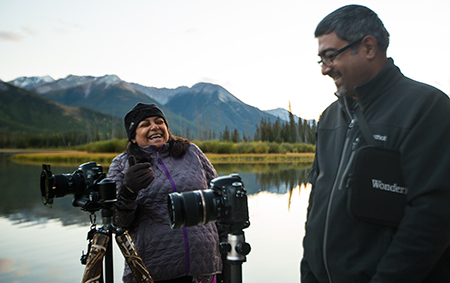 We arrived at the Chateau in time for folks to check in and get settled in their rooms before we set out again in search of wildlife and a stop at the often glassy Herbert Lake for sunset. Herbert wasn't as glassy as we wanted him to be, but he still offered up some nice compositions and chances to see one of the loveliest places in the Banff NP region. When conditions aren't ideal, the best way to make use of the time is searching out smaller details, playing with exposure times, and finding that perfect composition you can use if and when you return to a spot. We played with the lodge pole pine forest a bit and created some abstractions by panning during our shooting. Everyone got a good lay of the lake so they'd be able to find the best composition when we came back the following day, hopefully under better conditions.
We arrived at the Chateau in time for folks to check in and get settled in their rooms before we set out again in search of wildlife and a stop at the often glassy Herbert Lake for sunset. Herbert wasn't as glassy as we wanted him to be, but he still offered up some nice compositions and chances to see one of the loveliest places in the Banff NP region. When conditions aren't ideal, the best way to make use of the time is searching out smaller details, playing with exposure times, and finding that perfect composition you can use if and when you return to a spot. We played with the lodge pole pine forest a bit and created some abstractions by panning during our shooting. Everyone got a good lay of the lake so they'd be able to find the best composition when we came back the following day, hopefully under better conditions.
Day 6
Our next morning was spent at Lake Moraine, easily one of the most beautiful spots in the planet. High snow covered peaks, sitting over a teal-blue lake and a rocky high point vista to view it all. It just doesn't get better. This is easily one of the most popular spots in the area, and it was crowded with cameras by the time the light began to come. We moved our group around to get everyone set up with a nice composition, and then spent the time moving from person to person to get them dialed in with all of the settings and compositional tweaks they needed. The light never really materialized with the intense alpine glow that folks were hoping for, but the colors in the sky and the serene calm lake made up for it, and everyone still got some nice imagery. After we shot the high vantage points we moved along the shoreline to shoot the boat docks, and find other interesting foregrounds to help balance out the scene.
 With Moraine in the bag it was back to our buddy Herbert Lake where he had finally decided to give up the goods, and a PERFECT reflective surface waited for us. The larch trees were glowing a bright gold on the hills high above the lakes, and the peaks were still dusted with snow, wispy clouds and blue skies made for some dynamite reflections- it was awesome. Everyone was able to really dial in their compositions here from their previous experience at the lake the day before. So many good shots on those cameras!
With Moraine in the bag it was back to our buddy Herbert Lake where he had finally decided to give up the goods, and a PERFECT reflective surface waited for us. The larch trees were glowing a bright gold on the hills high above the lakes, and the peaks were still dusted with snow, wispy clouds and blue skies made for some dynamite reflections- it was awesome. Everyone was able to really dial in their compositions here from their previous experience at the lake the day before. So many good shots on those cameras!
Once we were done with Herbert it was back to the hotel for some post-processing. It was a blast for Stephen and I to take some of those shots the folks had and make them sing with some post-processing tips. We saw SO many nice images, everyone easily had 4-5 images that could be printed large and hung up on the wall. It's always a nice feeling to see the work of others after they've put so much effort in to the learning and shooting parts of the workshop.
That night we made a second run to Castle, and conditions looked to be really be nice. Everyone got their spots set up on the Bow River, and waited. We fine-tuned compositions, went over the settings, but by this point most people were really dialed in with those, and it was just a matter of a tweak here or there to the composition. The mountain had a really nice glow on it, but the clouds in the east were blocking that last bit of sunset light we all were waiting for, so after some messing with abstractions of the water we made the choice to head back to Louise, and wait for our final morning shoot on the shore of Lake Louise, a neighbor to Lake Moraine, and just as stunning.
Day 7
 Though we only had to walk from our rooms to the edge of the lake we still depart early as this place fills up QUICK in the morning and we wanted that pole position. Everyone lined up along the rocky shores of the lake and Stephen and I helped the group change their settings on the cameras to get something they could see and then helped them to change their composition to one they'd like. I love using the hard diagonal of the mountains to lead the eye into the picture and right into that rich blue water. A lot of folks took my suggestion and went with the vertical compassion as well, and as light began to hit the peaks we noticed we were joined by about 40 other photographers and tourists all there to see the sunrise. The lake was flat and mostly calm, the reflection was on point, and a bit of pink began to glow on the mountains. The shutters were firing, things were looking GOOD. It's important to shoot all through the stages of sunrise. Don't wait until you think the light is peaking because you never know when Mother Nature will pull the plug out and end the show. Our group was on it and everyone got some good light on those peaks for their images because it didn't last long.
Though we only had to walk from our rooms to the edge of the lake we still depart early as this place fills up QUICK in the morning and we wanted that pole position. Everyone lined up along the rocky shores of the lake and Stephen and I helped the group change their settings on the cameras to get something they could see and then helped them to change their composition to one they'd like. I love using the hard diagonal of the mountains to lead the eye into the picture and right into that rich blue water. A lot of folks took my suggestion and went with the vertical compassion as well, and as light began to hit the peaks we noticed we were joined by about 40 other photographers and tourists all there to see the sunrise. The lake was flat and mostly calm, the reflection was on point, and a bit of pink began to glow on the mountains. The shutters were firing, things were looking GOOD. It's important to shoot all through the stages of sunrise. Don't wait until you think the light is peaking because you never know when Mother Nature will pull the plug out and end the show. Our group was on it and everyone got some good light on those peaks for their images because it didn't last long.
It was a great morning on a great lake. Everyone got some nice new images, and then set off back to their rooms to pack, and meet us for our 8:30am departure time back to Calgary.
It was early so our group made one more stop in Banff for a last group meal together before finishing up the drive back to Calgary so everyone can catch their flights home. It was a fun week with wild weather, some great light, and fun times. I think everyone came away with some nice images to show to friends and family or even print and hang on the wall. I know from the standpoint of Stephen and myself, this is a Rocky Mountain High we won't soon forget.
Until Next Time,
Brian, Stephen, and the rest of the Aperture Academy Family.
If you'd like to join us at one of our workshops, you can find the schedule/sign up here.
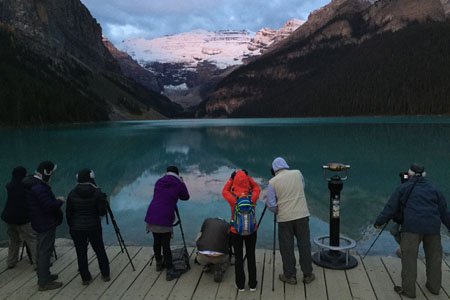 |
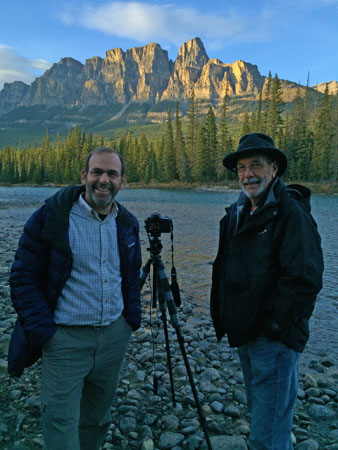 |
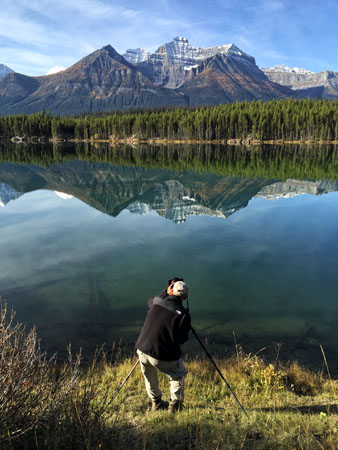 |
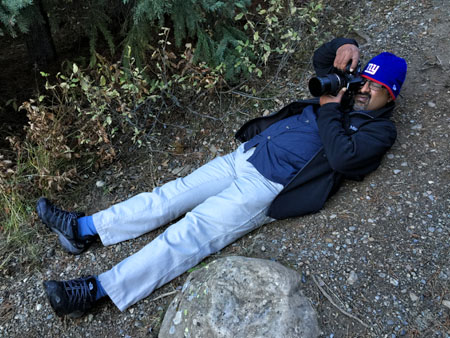 |
 |
 |
 |
 |
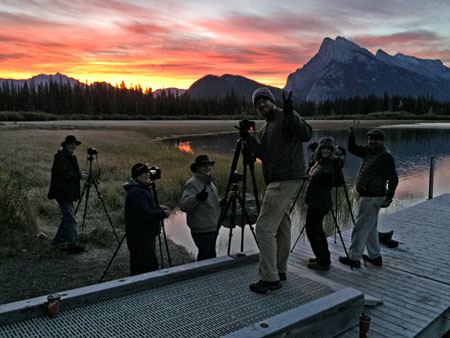 |
 |
 |
 |
 |
 |
 |
 |
 |
 |
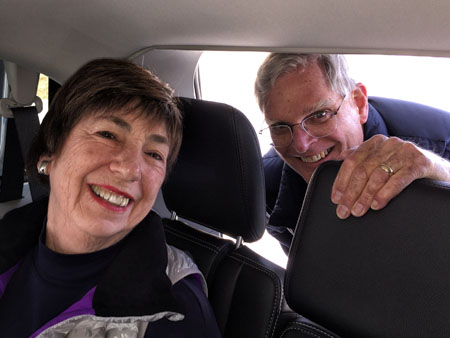 |
 |
 |
 |
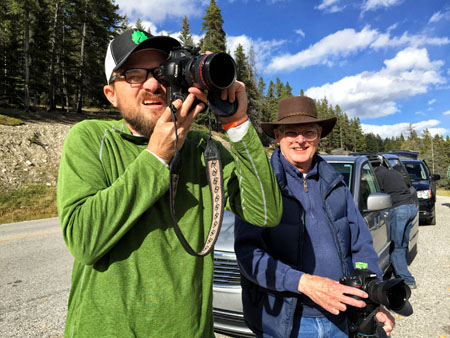 |
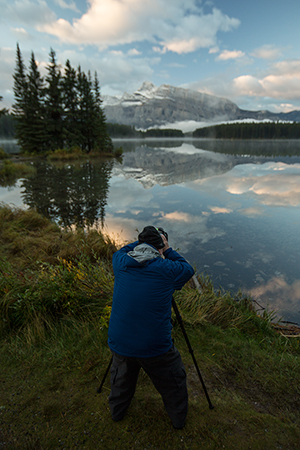 |
 |
 |
 |
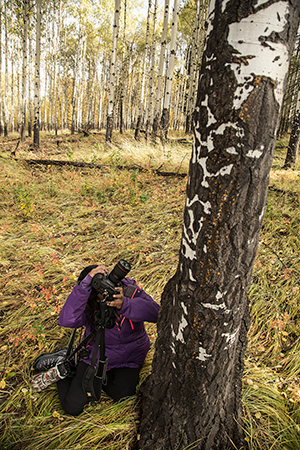 |
 |
 |
 |
 |
 |
 |
 |
 |
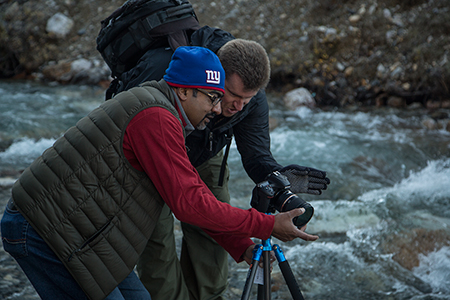 |
 |
 |
 |
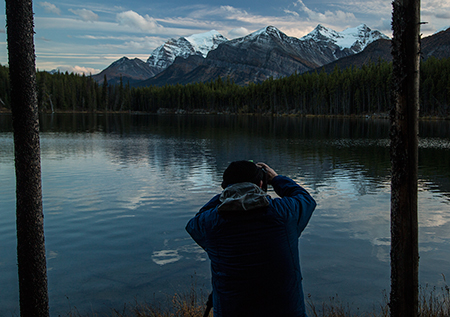 |
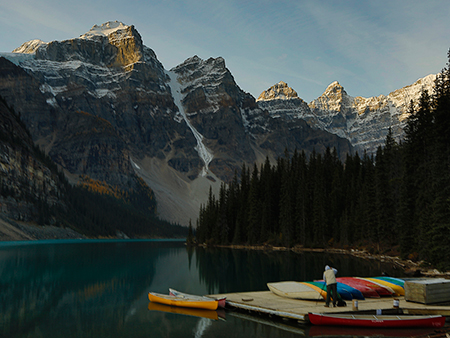 |
 |
 |
 |
|
 |
Other Cool Stuff→ Past Workshop Photos → 72dpi.com → How-To Articles → Photographer of the Month |
 |
Contact Us→ Contact Us → About Us → Site Map |
© 2009-2024 Aperture Academy, Inc.
